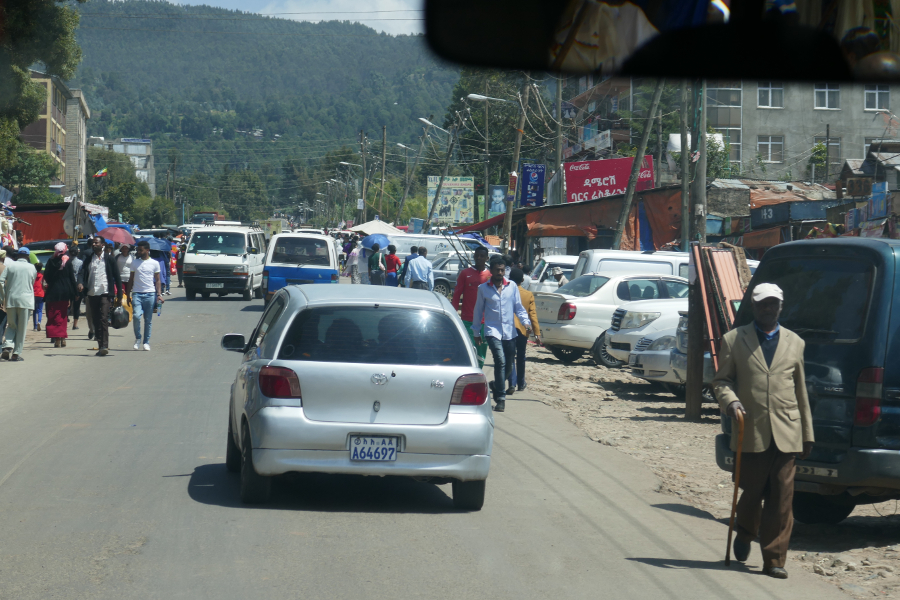
Today, we have booked a city tour, that will lead also to serveral museums in Addis
We start at about 9 am with Gebrem (it’s pronounced G’broumm with a klick in the G) and the driver Haile in a minibus normaly for eight people – but we are the only guests.
First of all we go to the National Museum, which shows numerous pieces from serveral centuries – in the basement we find bones of Lucy, Arde and their friends of the beginning of man kind.
On the ground floor, there are more Things about farming and clothing of Ethiopian tribes – and of course crowns and scepter of the different rulers.
In the uppermost storey there is art, including the famous panting „Afrika“ of Afewerk Tekle.
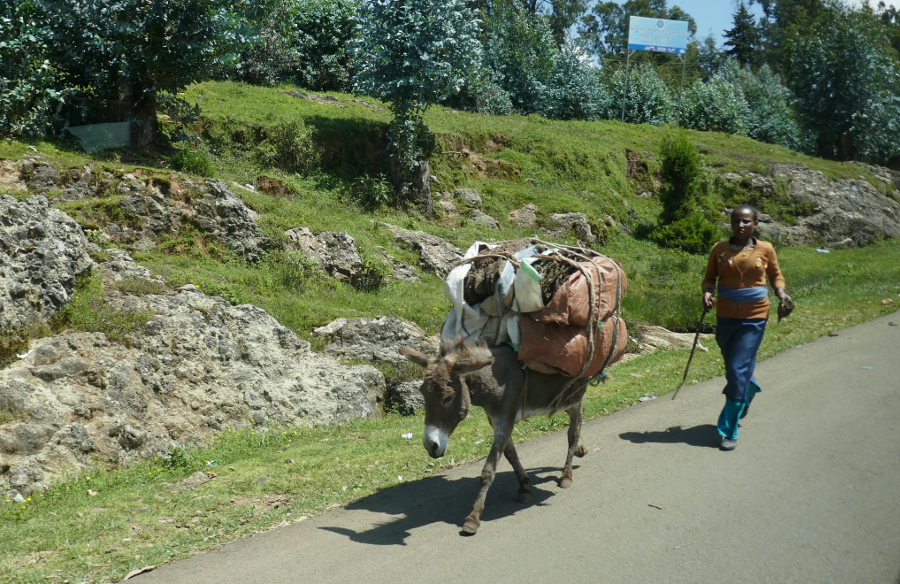
Then we drive up to the Entoto hill, the first ruling camp of Menelik II – well known as the founder of Addis Ababa.
The city -meanwhile the biggest of the continent – was founded only in the second half of the 19th century. The founder was the above mentioned Menelik II, f whom we vistit the palace on the 3200 m high Entoto. We wouldn’t like to live in. Everything is more r less simple and without comfort. In any case in comparison to European Highnesses at the same time.
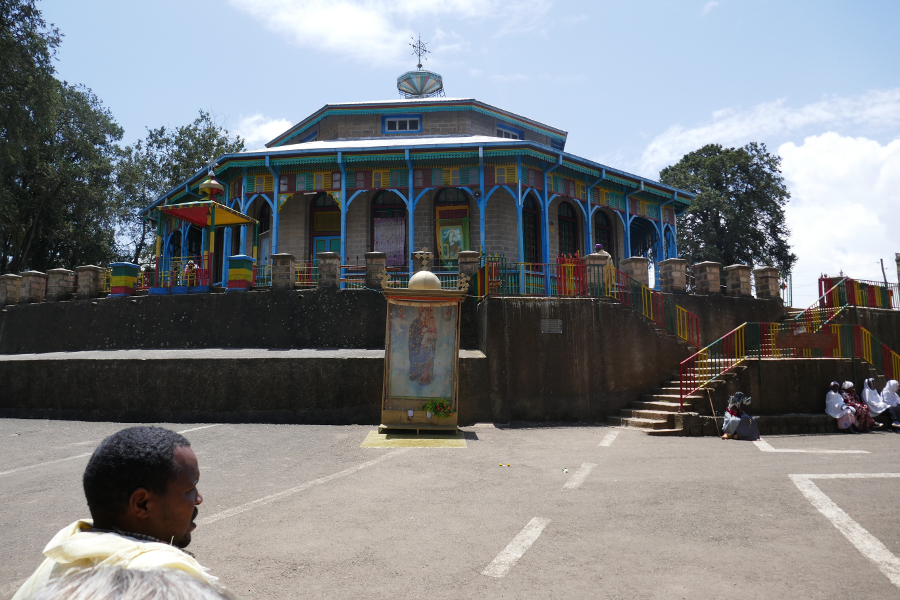
But Menelik didn’t stay long on the hill. His wife wanted to live close to the hot springs down the hill, and so the mood of a woman lead to the founding of Addis Ababa, what means „new flower“.
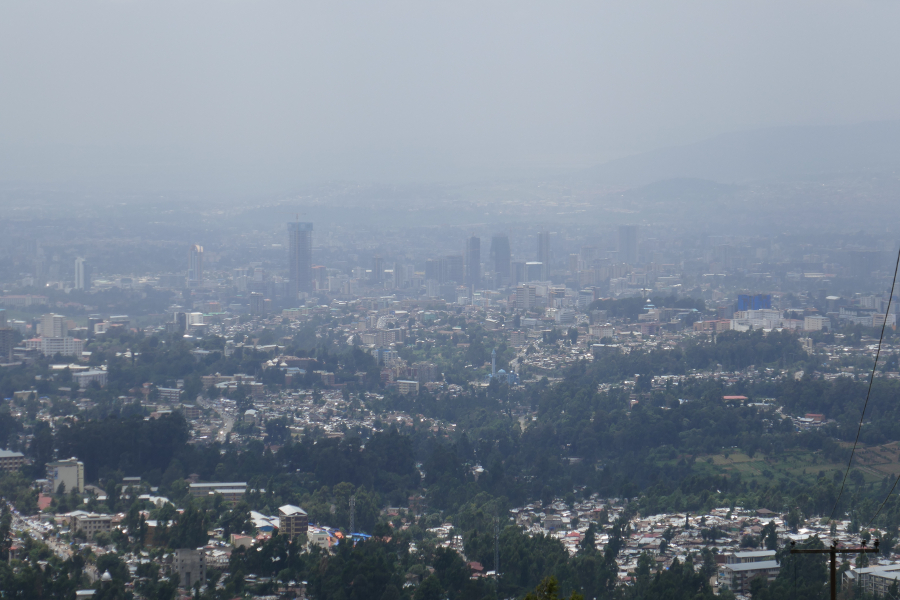
Next stop is the Ethological Museum which is situated in the University of Addis, which formerly belonged to emperor Haile Selassie. In the palace are also his and his wife’s private bed- and bathroom. His bath tube even had a curtain.
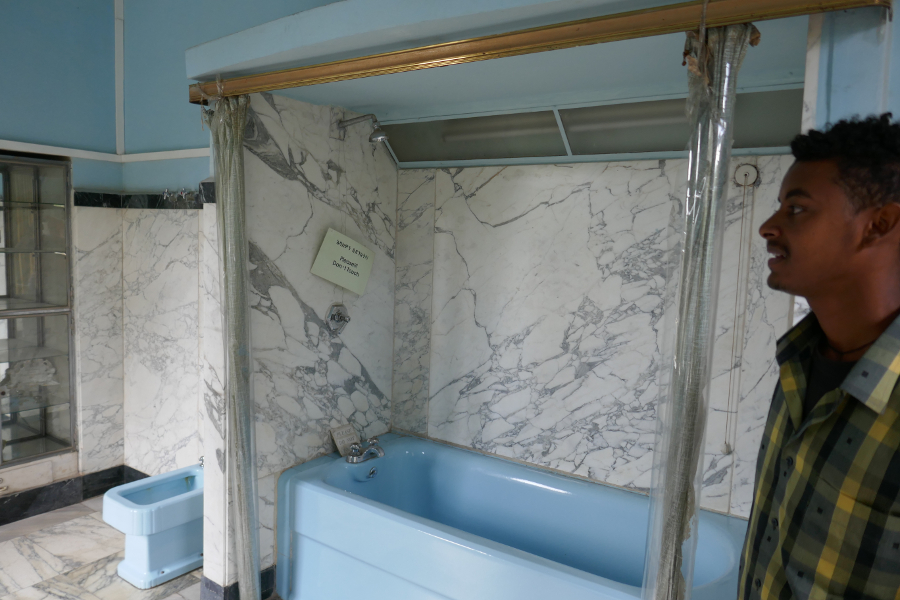
The museum is not very systematic, but gives an impression about the many tribes in Ethiopia and their rites and religions.
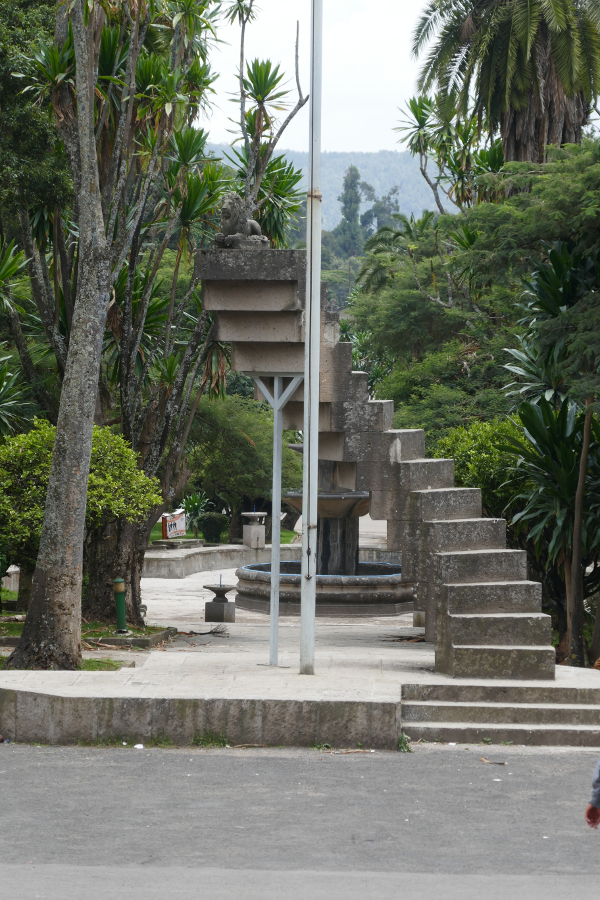
In front of the building there is a sort of memorial – 14 steps lead into nothing. The Italians have built it in 1936 – each steps symbolising one year of fascism leadership by Moussolini in Italy. 1936 Italy occupied Ethiopia. But Haile Selassie defeated them in 1941 and has built a Lion of Juda on top – as a symbol of the Ethiopian Crown.
We can take a break, get a measly 3000 Birr from an ATM and drink coffee with Gebrem and Haile.
We ask about the demonstrations and riots in the city – and poke into a wasp nest. Because Gebrem is from Tigray and does not find the government of EPRDF actually so bad. Only people would not recognize that correctly.
Haile is Amhare (but his mother is from Tigray) and he has a very different opinion: everything here in Addis belongs to the Tigray guy, who suck the people out and buy houses from the staggering millions. Hm.
Haile says the EPRDF had pitted the tribes against each other until the „change“ (at the top of the EPRDF) – especially inciting Oromo against Amharen. Gebrem disagrees completely. The EPRDF has respected and strengthened the cultural autonomy of the ethnic groups.
What’s right? Probably both.
In any case, the demonstrations, they say, are aimed at integrating Addis into the Oromo region, rather than leaving it as an autonomous administrative unit. Haile says the EPRDF hardliners have incited the Oromo to destabilize the „new line“ under the Oromo president. Gebrem says that’s nonsense, that it is cross-drifting Oromo who are active.
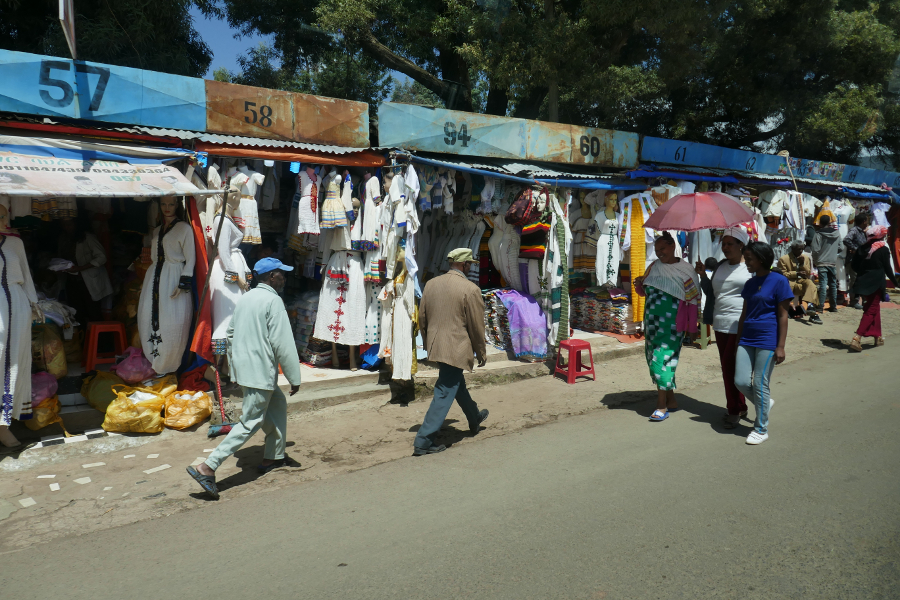
Anyway, we’re leaving to get sunglasses for Annette. Our guides want to give her something decent and head for several opticians – but they have all sorts of visuals – but not sunglasses without diopter.
Finally, we find one of the countless stalls on the street and buy a copy for 200 Birr. You can not go wrong…
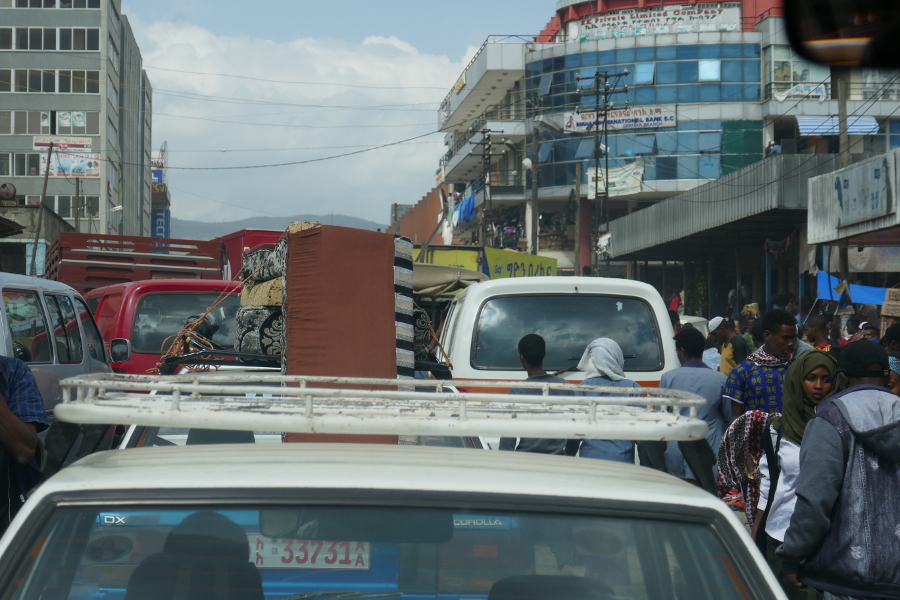
Next stop is the famous Mercato, the largest marketplace in Africa, with the market stalls almost all in fixed halls. Today is not much going on, the two protest – but we push each other through hundreds of people, with and without head loads or high loaded wheelbarrows. Sometimes shoe store joins shoe store, sometimes there are carpets on the right and left, leather goods on one side and mattresses on the other side. There is everything in this market. Well, almost everything.
From the market once again to the north of the city center to the Holy Trinity Cathedral, once built by Haile Selassie (more at the time when people in Germany used to build Catholic churches out of washed concrete). He is also buried there in a gigantic marble sarcophagus next to his wife. In addition to the usual pictures of Jesus, the church also displays ceiling paintings of the battle against the Italians and an impressive presentation of a League of Nations meeting, in which Haile Selassie 1936 condemned the Italian invasion in a speech.
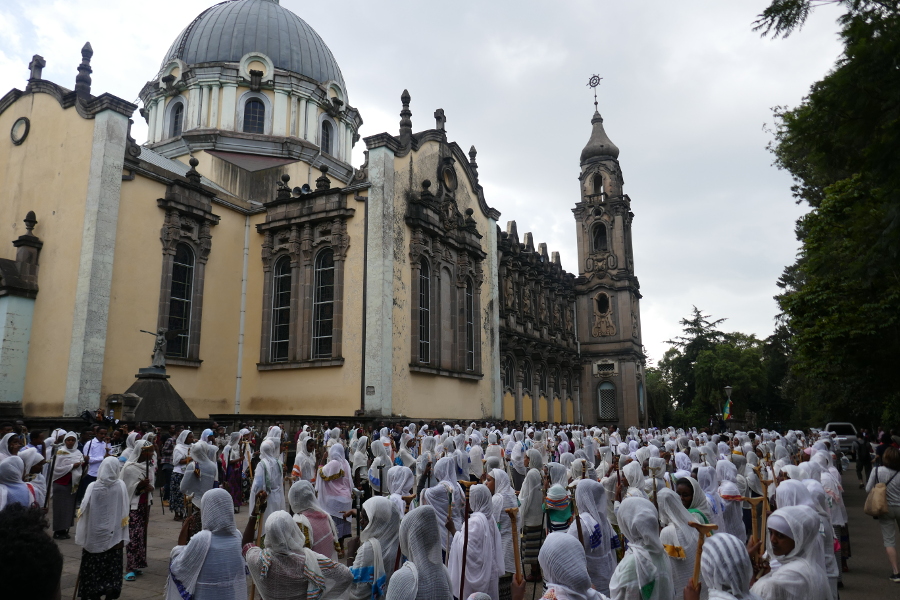
Outside, we witness a ceremony with about 200 young women and men, who – conducted by a priest in the middle – always go back to each other – very impressive, especially the music of Zirbeln and drums.
In the attached cemetery are celebrities. They like to portray themselves with almost life-size busts – a sports reporter is in action, with headphones over their ears.
Close to the grave of Meles Zenawi, the longtime president of Ethiopia, who died in 2012 of a brain tumor. Gebrem considers Meles a genius – and even Haile speaks of him with a certain respect.
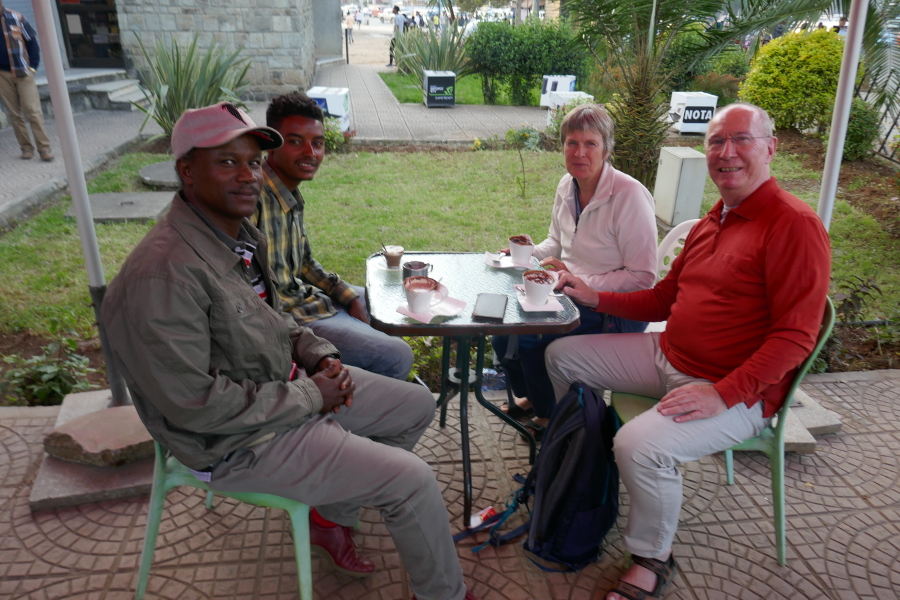
At the end we drive to the old train station – La Gare – and take a picture of the Statue of the Lion of Juda.
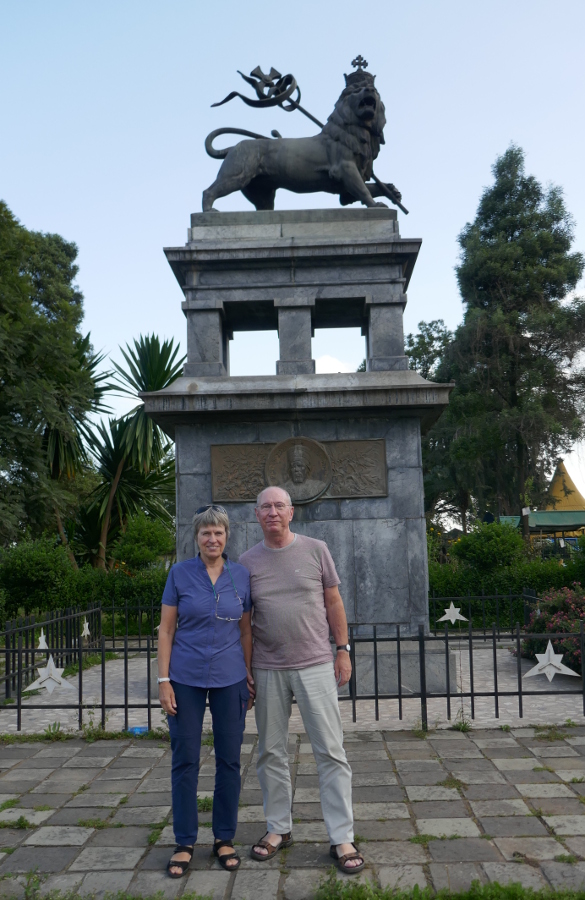
In the evening, we have our first Ethiopian meal in a rather touristic restaurant providing also typical music and dancing. Not to bad!
 Der Tourist nimmt gerne etwas Gesang und Tanz zur Injera…
Der Tourist nimmt gerne etwas Gesang und Tanz zur Injera…

